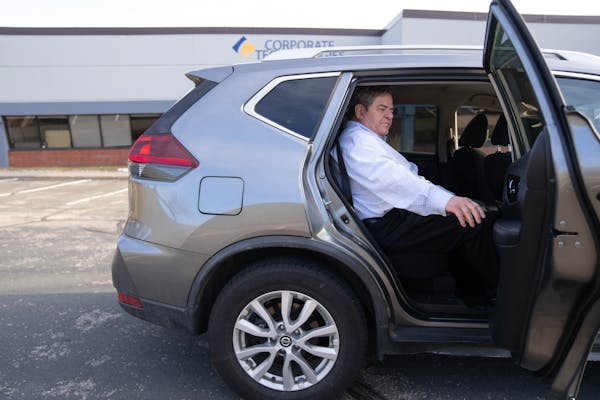Opinion editor's note: Editorials represent the opinions of the Star Tribune Editorial Board, which operates independently from the newsroom.
•••
Parking has never been an easy subject at the University of St. Thomas. Neighbors of the university have long complained about heavy traffic on local streets when school is in session, and that's to say nothing of the congestion visited upon the neighborhood on big game days. A page devoted to parking on the university's website highlights some advice: "Please consider other transportation options when visiting our St. Paul campus."
Those words could serve as a school motto — less stirring, maybe, than the official "All for the Common Good," but more easily applied to daily life. The University of St. Thomas is predominantly a campus of commuters, and significant numbers of those commuters arrive singly on campus by car. Parking is always in short supply.
The shortage will only get worse, assuming the university is able to carry out its plan to build a hockey and basketball arena on campus. The new arena is expected to seat up to 5,500, and its footprint requires space that had been occupied by a residence hall, two smaller buildings and some of the university's surface parking. Construction has sacrificed more than 250 parking spaces. A transportation study estimated that the university could come up 740 spaces short when an at-capacity crowd attends a Tommies game.
It's easy to see why St. Thomas wants to build a new arena. Its current ice arena is about 8 miles from campus in Mendota Heights, and it seats only 1,000. It might have been good enough in 2003, when St. Thomas was a lowly Division III school. But for the rising Division I power that St. Thomas has become, the Mendota Heights facility is too far away and seats too few.
On the other hand, there's plenty of parking.
Some of the university's neighbors understandably have objected to the new arena, citing parking and other concerns. "Over the past several decades, St. Thomas has been adding density while eliminating parking," says a website for Advocates for Responsible Development (ARD), a neighborhood group, adding that "the arena would create a much worse community problem than already exists."
ARD has filed a complaint on environmental grounds, asserting that St. Thomas should have prepared a full environmental impact statement for the project. Officials at St. Thomas have countered that the university's environmental assessment worksheet, which the city of St. Paul approved last year, was thorough and appropriate. Judging by the proliferation of anti-arena yard signs in the neighborhood, many local residents are unconvinced.
Whatever the outcome of the dispute, it's clear that the university's growing presence in the neighborhood puts it on a collision course with its neighbors. St. Thomas officials have promised they will take steps to meet neighborhood concerns, like encouraging the use of shuttles and other alternative transportation, improving traffic control and ensuring that residents have a platform for raising their issues.
With or without the new arena, St. Thomas will have to find ways to aggressively reduce its student body's reliance on cars. A 2018 study found that nearly 40% of students and staff arrive on campus as single occupants of cars. Parking permits are sold by a lottery system, and students complain that even with a permit there's often no place to park.
St. Thomas has committed itself to becoming carbon-neutral by 2035 and taking other measures to improve its sustainability ranking. Those are good goals. But the university's geographic reality obliges it to live in harmony with its neighbors, too. Perhaps those neighbors will never be satisfied — but unsatisfied is preferable to enraged.

What Biden forgot in his Holocaust Memorial speech


